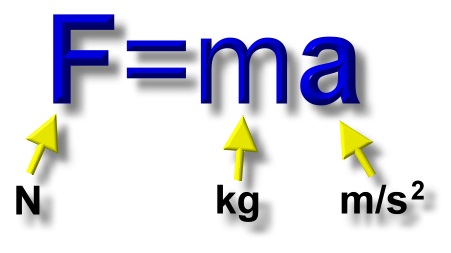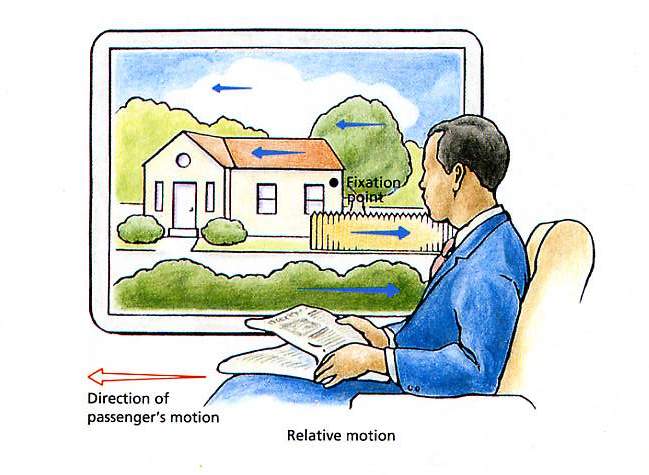Thanks for reading this post, and please leave a comment in the comment section down below.
Drop the beat science blogger
Sunday, May 11, 2014
Element 117?
Hey everybody, I'm back again with another post on a new science discovery that will soon put a new name on the periodic table of elements. Before you read on, I have a question for you. If you could name an element on the periodic table, what would you name it? Please leave a comment in the comment section down below. Here's the article if you want to read more.
Science has confirmed the existence of a new element in the universe. Back in 2010, a joint collaboration between American and Russian scientists had officially created the atoms for this new element. The problem with this new element is its life span. The element is very unstable and exists for only fractions of a second before decaying. A fun fact about the element's discovery is that the scientists did not even see the actual element, but instead studied the decayed parts of the element and discovered elements 105 and 103, two of the most stable isotopes on the table. The current name for this element is Ununseptium, but the name could change once the element is officially added to the table.
I found this article to be interesting and very informative. I like that countries are collaborating to further science, even though we may not all have the best history with each other. I hope that they do keep the name for element 117 because it is a clever name. I believe that this element will also be put on the table, but not before next year.
Thanks for reading this post, and please leave a comment in the comment section down below.
Thanks for reading this post, and please leave a comment in the comment section down below.
Thursday, April 17, 2014
The Wave
What's up everybody? I'm back once again with a new post this week. Since it's April and most people are on Spring break and during this week of fun in the sun going to the beach, I wanted to talk about waves, and yes I may include something about ocean waves. Sadly, ocean waves are not the only waves out there in the world of science, so I will also talk about the other types of waves. I have to make sure you people get some kind of knowledge out of this, so I will teach the different parts of a wave. Before we dive into the world of waves, quick question: what is your favorite beach that you have been to? Please leave your comments in the comment section.
Well first things first, what is a wave? A wave is a rhythmic disturbance that carries energy, but a wave can't carry matter. There are two main groups of waves, mechanical and electromagnetic waves. Mechanical waves are waves that need a medium or a material through which a wave travels. Two types of mechanical waves that are most common are transverse and compressional waves. In transverse waves, the energy travels perpendicular to the direction of energy transport, but in compressional waves, the energy travels parallel to the energy being transported. An electromagnetic wave does not need a medium too, like radio and ultraviolet waves.
Now that we know what waves are and some different types of waves, let's talk about the different parts of a wave. The top of a wave is called the crest. The crest is the highest point of the wave. The next part of the wave is the trough. The trough is the lowest point of a wave. The wavelength is the distance measured from two crests or from two troughs. Frequency is the measure of how many wavelengths pass through a given point in 1 second. The closer the wavelengths are to each other, the higher the frequency, and the farther apart the wavelengths are from each other, the lower the frequency. Finally, the amplitude is half the distance between a crest and a trough.
Thanks for reading this week's post, and please leave a comment in the comment section down below.
Well first things first, what is a wave? A wave is a rhythmic disturbance that carries energy, but a wave can't carry matter. There are two main groups of waves, mechanical and electromagnetic waves. Mechanical waves are waves that need a medium or a material through which a wave travels. Two types of mechanical waves that are most common are transverse and compressional waves. In transverse waves, the energy travels perpendicular to the direction of energy transport, but in compressional waves, the energy travels parallel to the energy being transported. An electromagnetic wave does not need a medium too, like radio and ultraviolet waves.
Now that we know what waves are and some different types of waves, let's talk about the different parts of a wave. The top of a wave is called the crest. The crest is the highest point of the wave. The next part of the wave is the trough. The trough is the lowest point of a wave. The wavelength is the distance measured from two crests or from two troughs. Frequency is the measure of how many wavelengths pass through a given point in 1 second. The closer the wavelengths are to each other, the higher the frequency, and the farther apart the wavelengths are from each other, the lower the frequency. Finally, the amplitude is half the distance between a crest and a trough.
Thanks for reading this week's post, and please leave a comment in the comment section down below.
Monday, March 17, 2014
Newton's Law
Hey everyone, I'm back this week with a new post for you all and this one will be a short one. Before we begin, I have a question for you: do you think that there is a way for The Three Laws of Motion to be broken, and if so how? Leave a comment in the comment section. Ok, if you have not figured it out let, I'm going to be talking about Newton's Laws of Motion. In this post, I will be reviewing all three laws of motion and I'll make sure to give you examples.
The first law of motion states that an object at rest tends to stays at rest. The object will remain at rest until an unbalanced force acts upon that object. If the object is in motion, it will continue to stay in motion in a straight line. An example for this law is when a person kicks a soccer ball. The ball is on the ground and is not in motion, but when someone kicks the ball, the ball is in motion and will continue to be in motion until another force(s) acts upon the ball, in this case air resistance and gravity.

Now that we've covered Newton's First law, lets talk about the second law. Newton's second law of motion states that the acceleration of an object is dependent upon two variables, the acceleration of the object and the mass of the object or F=MA. F stands for force, M stands for mass, and A stands for acceleration. This formula will allow you to calculate how much force it would take to move an object by multiplying the mass of an object by the acceleration of the object.
Finally, Newton's third law of motion states that for every action there is an equal and opposite reaction. The statement means that in every interaction, a pair of forces is acting on the two interacting objects. This law is why birds can fly and how we got people to the moon. Another example is fish swimming in water. A fish uses its fins to push water backwards. But a push on the water will only serve to accelerate the water. Since forces result from mutual interactions, the water must also be pushing the fish forwards, propelling the fish through the water.
Thanks for reading this post, and please leave a comment in the comment section down below.
The first law of motion states that an object at rest tends to stays at rest. The object will remain at rest until an unbalanced force acts upon that object. If the object is in motion, it will continue to stay in motion in a straight line. An example for this law is when a person kicks a soccer ball. The ball is on the ground and is not in motion, but when someone kicks the ball, the ball is in motion and will continue to be in motion until another force(s) acts upon the ball, in this case air resistance and gravity.

Now that we've covered Newton's First law, lets talk about the second law. Newton's second law of motion states that the acceleration of an object is dependent upon two variables, the acceleration of the object and the mass of the object or F=MA. F stands for force, M stands for mass, and A stands for acceleration. This formula will allow you to calculate how much force it would take to move an object by multiplying the mass of an object by the acceleration of the object.
F=MA
Finally, Newton's third law of motion states that for every action there is an equal and opposite reaction. The statement means that in every interaction, a pair of forces is acting on the two interacting objects. This law is why birds can fly and how we got people to the moon. Another example is fish swimming in water. A fish uses its fins to push water backwards. But a push on the water will only serve to accelerate the water. Since forces result from mutual interactions, the water must also be pushing the fish forwards, propelling the fish through the water.
Thanks for reading this post, and please leave a comment in the comment section down below.
Sunday, March 9, 2014
Gravity
Hey everybody, I'm back again for a new post this week. Quick question though, did you like the movie Gravity? Please answer this question in the comment section down below. Ok, this week we are going to be talking about a special type of force that I hope we are all aware of. It is the force that keeps us on the ground, and keeps the planets orbiting the sun, and in no uncertain terms lets us drop the beat. The week, I will be talking about gravity.

Gravity is the force that is a push or pull upon an object. This is what keeps the planets in orbit around the sun because the sun's gravitational pull is holding the planets in its orbit. Another example that's more down to Earth is if you had a box blocking your way, what would you do? Well, you would hopefully push the box out of the way. Gravity is also the most influential force in the universe. Without gravity, you and all other forms of matter would float pointlessly around in space.

Now that we know what gravity is, let's talk about the two men that showed us what gravity is and it contribution to science. The first person to discover gravity is a man named Galileo. If his name is familiar to you than that's a good thing because he is the man who created the experiment where you drop two objects at equal level so that they would both fall to the ground at the same time. Surprisingly, the day that Galileo died, Sir Isaac Newton was born! Isaac Newton is the man that discovered that gravity's strength on an object depends on its mass and distance.
Ok, now that we know what gravity is and how it is important, let's now talk about mass, weight, distance, and see how they all play a role in how gravity affects you. Mass is how much space an object takes up. Distance is how far an object is from a starting point. Weight is how much force is to be acted upon the object, and this is why your weight changes on different planets.
Thanks for reading this post, and please leave a comment in the comment section down below.
Sunday, March 2, 2014
Use The Force
Hello everybody, I'm back again with a new post for this week and I hope that I can get back into that post per week routine, but no promises. Well, this week we will be talking about something that all you Star Wars fans will be quite familiar with. We will use the force of our minds and explore what force is and how it affects the world around us. Now that we know our topic for this post, let's begin.
Force is a push or pull that is acted upon an object. Force is all around and you may not know it's there. One form of force that we are all hopefully aware of is the force of gravity which keeps us on the ground. Another type of force is action at a distance force. This type of force is what keeps the earth in a constant orbit around the sun. Another type of force is contact force. An example of this is when two cars collide into each other and one car is bumped back. These are some of the examples of force that you can see every day. Force also has a special type of measurement as well. When you measure force you measure it in Newtons. The reason why it is named Newtons is because Sir Issac Newton was the first person to discover force and how force works on objects. He also created the three laws of motion. Finally there is thrust. Thrust is the reaction force that is applied on a surface in a direction perpendicular or normal to the surface.
Now that we know what Force is and how it is measured, let's talk about balanced and unbalanced force and how you can tell them apart. Balanced force is when an object is at rest or in a constant speed and direction. These characteristics are of balanced force, but who wants to stay at a constant speed or stay in the same direction? Let's say that you have the need for speed, so what do you need to go faster? It's unbalanced force. Unbalanced force is when the force (push or pull) on the object is greater than the other forces acting upon it. Depending on where this greater force is applied, you would travel in that direction, may it be up, down, left, right, forwards, or backwards.
Now that we know what balanced and unbalanced forces are, let's now learn about centripetal force. Centripetal force is when an object is in a circler motion moving at a constant speed. An example of this is when a motorcycle is spinning in a metal cage. The reason why the motorcyclist is able to do the spins in the cage is because of centripetal force.
Thanks for reading this post, please leave a comment in the comment section down below.
Force is a push or pull that is acted upon an object. Force is all around and you may not know it's there. One form of force that we are all hopefully aware of is the force of gravity which keeps us on the ground. Another type of force is action at a distance force. This type of force is what keeps the earth in a constant orbit around the sun. Another type of force is contact force. An example of this is when two cars collide into each other and one car is bumped back. These are some of the examples of force that you can see every day. Force also has a special type of measurement as well. When you measure force you measure it in Newtons. The reason why it is named Newtons is because Sir Issac Newton was the first person to discover force and how force works on objects. He also created the three laws of motion. Finally there is thrust. Thrust is the reaction force that is applied on a surface in a direction perpendicular or normal to the surface.
Now that we know what Force is and how it is measured, let's talk about balanced and unbalanced force and how you can tell them apart. Balanced force is when an object is at rest or in a constant speed and direction. These characteristics are of balanced force, but who wants to stay at a constant speed or stay in the same direction? Let's say that you have the need for speed, so what do you need to go faster? It's unbalanced force. Unbalanced force is when the force (push or pull) on the object is greater than the other forces acting upon it. Depending on where this greater force is applied, you would travel in that direction, may it be up, down, left, right, forwards, or backwards.
Now that we know what balanced and unbalanced forces are, let's now learn about centripetal force. Centripetal force is when an object is in a circler motion moving at a constant speed. An example of this is when a motorcycle is spinning in a metal cage. The reason why the motorcyclist is able to do the spins in the cage is because of centripetal force.
Thanks for reading this post, please leave a comment in the comment section down below.
Sunday, February 9, 2014
Acceleration
Hey guys, back again with a new post for you, but before we begin I'll ask a quick question. Would you or would you not like to fly a fighter jet? Please leave a comment in the comment section. So, this post is going to be on a topic that all you Forza fans are going to love. It is what makes race car driving fun, causes screams of fear as you plummet to the bottom of a roller coaster, and is one the reasons why most people would not want to jump out of a plane. Did you guess it yet? Well if you didn't, it's acceleration.
Acceleration by definition is the speed at which an object changes its velocity. When a car is driving down south on the highway at 60 miles per hour and then the car speeds up to 70 miles per hour, this is an example of acceleration. Acceleration can also be measured by a simple formula. Also, here's a video to help you understand this formula. There are three types of acceleration: speeding up, slowing down, and changing direction.
Now that we know what acceleration is, let's learn the difference between positive and negative acceleration. One way to accelerate is to accelerate positively. This means that an object speeds up. An example of this is a kid on a skate board ramp. On the ramp, the kid is not moving, but when he starts to go down the ramp, he accelerates positively, or speeds up. Another type of acceleration is negative acceleration. This is when an object decelerates (or slows down its acceleration). If a car dives at 60 miles per hour, but then slows down to 50 miles, it has decelerated.
Finally, lets learn how acceleration is graphed. The X axis of the graph is reserved for time. The Y axis displays intervals of acceleration. The line on the graph represents the acceleration of the object. A U shape of a graph represents positive acceleration, a n shape on a graph represents a decrease in acceleration, and a straight line represents no change in acceleration.
Thanks for reading this post, and please leave a comment in the comment section down below.
Monday, January 20, 2014
Motion, Are You Moving?
Hey viewers, back again with a new post, and this may just get you on your feet and start moving at high speeds. I hope that this post will get you in motion, but don't displace(ment) your coffee cups just yet because we are going to learn about speed, motion, velocity, and some other fun and interesting things about motion! So, sit down, get comfortable, and get ready to be taken on a wild ride as we learn about motion and how it works.
Before I can start talking about speed and velocity and average speed, we must first understand what motion is. Motion is the action or process that moves an object. All matter in the universe is in motion, from the planets orbiting the sun to a single blade of grass growing on a hot summer day. When you kick a soccer ball, that ball is in motion as it flies through the air when you try and score a goal, and let's not forget the goalie is in motion too as he tries to stop the ball from going in. Even you, yes you my good friend are also in motion at this very moment. When you walk or talk or even blink, you are in motion.
Now that we know what motion is and have many examples, let us learn how we know that an object is moving or has moved in a scientific way. To know if an object has moved, we need to know about its relative motion and we need a reference point. A reference point is where an object is at before it moves, for example, if you are in a race, you know that there is a starting line and a finishing line; this means that your reference point is the starting line, and based on far you go, that would be your relative motion from the starting line to the point that you stop at.
Now that we know that motion has occurred, lets talk about distance and displacement, and how they are different. Distance is the length of the path that you take to get from one place to another, and here is an example for you. You take your car from your house to the Ikea in the city, and to get there, you must drive 160 miles. Now displacement on the other hand is between the two locations, and here are some examples of displacement and distance.
Now that we have finished distance and displacement, lets talk about speed. Speed is how fast an object is moving in a certain time. The mathematical formula for finding speed is distance divided by time or S= D/T. Instantaneous speed is how fast an object moves at a certain point in time, but on the average speed is how fast an object is moving throughout the total distance traveled.
Ok, let's now finish this post by talking about velocity. Velocity is the measure of how fast an object is going in a certain direction. To measure velocity, you need two pieces of information to know what the velocity of an object is. First, you need to know what the speed of the object is and second, the direction the object is traveling in. A time that you would need velocity is when you are trying to find out how long it will take you to travel from your home to your local shoe store.
Subscribe to:
Comments (Atom)





















